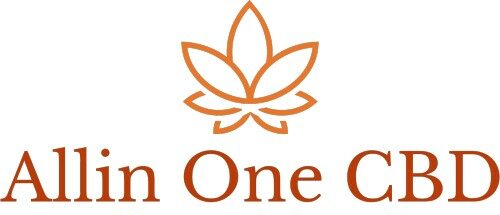Book Your Dermal Filler Consultation with Dr. Laura Geige Today
## Injection Technique

Injection techniques play a crucial role in determining the outcome of any dermal filler treatment, including those aimed at achieving fuller lips. A skilled injector understands that precise placement and technique are paramount to ensuring natural-looking results.
Here’s a breakdown of key injection considerations for lip augmentation:

-
Arrange Your Dermal Filler Consultation with Dr. Laura Geige
-
Target Areas:
-
Depth of Injection:
-
Superficial injections target the top layer of skin, enhancing subtle lip contours and adding a touch of definition.
-
Deeper injections create volume and fullness in the body of the lips and can address asymmetry.
-
Injection Technique:
-
Linear Threading:**
-
Nodular Injection:
-
Fanning Technique:**
-
Volume Distribution:
Experienced injectors map out specific areas within the lips that require enhancement. These can include the vermillion border (the line where your lips meet your skin), the cupid’s bow (the dip above the center of the upper lip), the body of the lip, and even the philtrum (the vertical groove between the nose and upper lip) for added volume.
Dermal fillers are injected at varying depths within the lips.
Different injection techniques are employed depending on the desired outcome:
This involves injecting filler along linear pathways, creating subtle, graduated fullness.
Smaller “nodules” of filler are placed strategically to add definition and shape, particularly in the cupid’s bow.
Filler is injected fan-like across the lip, creating a natural, diffused effect.
Arrange a Consultation for Dermal Fillers with Dr. Laura Geige Today
Injectors carefully distribute filler evenly throughout the lips to avoid overfilling or unnatural contours. They consider the patient’s individual anatomy and desired outcome when determining the appropriate amount of filler.
It’s important to note that a qualified injector will take the time to discuss your goals and concerns, as well as assess your facial features before deciding on the most suitable injection technique for achieving natural-looking “duck lips” or any desired lip enhancement.
Depth of Insertion
Volume of Filler
Spread and Placement
## Facial Anatomy
Understanding facial anatomy is crucial to understanding why some patients might develop a “duck lip” appearance after filler injections.
Spread and **placement** are two key factors that contribute to this undesired outcome.
Spread refers to the way hyaluronic acid (HA) filler diffuses within the tissues after injection. The degree of spread is influenced by several factors, including the type of filler used (viscosity), injection technique, and natural tissue properties.
Some fillers are designed to be more cohesive and stay localized, while others are more fluid and have a higher potential for spreading.
**Placement**, on the other hand, is about the specific location within the lip where the filler is injected.
Injecting filler too superficially can lead to a rounded or bulbous appearance, resembling the “duck bill” effect.
The lips are comprised of several distinct muscle layers and compartments. Inaccurate placement can inadvertently distort these structures, leading to an unnatural or exaggerated shape.
For example, injecting filler too high in the upper lip can cause it to appear overfilled and pushed upward, contributing to the “duck lip” look.
The *orbicularis oris* muscle, which encircles the mouth, plays a crucial role in lip movement.
Improper placement of filler within or around this muscle can disrupt its function, resulting in uneven puckering or difficulty forming words.
Orbicularis Oris Muscle
Dermal Layers and Fat Pads
## Individual Factors
The skin’s structure plays a crucial role in understanding how dermal fillers can affect lip appearance. The skin comprises three main layers: the epidermis, dermis, and hypodermis (subcutaneous layer).
The epidermis is the outermost layer, providing a waterproof barrier and containing melanin for pigmentation. The dermis lies beneath, composed of collagen and elastin fibers that provide strength, elasticity, and support. It also houses blood vessels, nerves, hair follicles, and sweat glands.
The hypodermis, or subcutaneous layer, is the deepest layer and mainly consists of adipose tissue (fat). This fat acts as insulation, cushioning for underlying structures, and provides volume to the skin.
Within the lips, there are distinct fat pads that contribute to their shape and fullness. The upper lip generally has a larger central pad compared to the lower lip, while the lower lip typically possesses a more prominent medial pad.
The distribution and amount of fat within these pads can vary significantly between individuals due to factors like genetics, age, and lifestyle. These variations contribute to the natural diversity in lip shape and size.
Over time, as we age, the subcutaneous layer thins due to a decrease in collagen production and fat cell loss. This thinning can lead to the lips appearing less plump and more defined.
Understanding these individual factors is essential for practitioners when administering dermal fillers to achieve natural-looking results.
Facial Structure
Skin Elasticity
A Glossy Life Blog My Mental Health Rocks Reimagining Journalism Carmen Alexandra
- Why CBD Gummies Are A Great Option For Pain Management Without THC - November 6, 2025
- What Is The Best Filler For Sagging Face? - November 3, 2025
- What Are The Benefits Of CBD Gummy Edibles For Energy Boost - November 2, 2025
